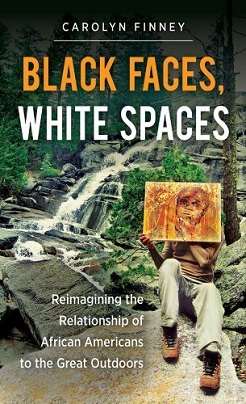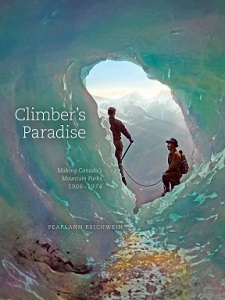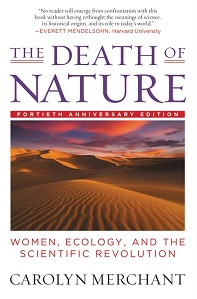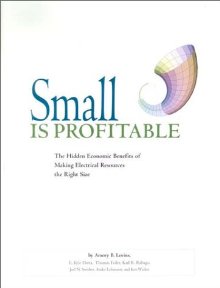 W
WAmazon Watershed : the new environmental investigation is a 1991 book by British writer and environmental and political activist, George Monbiot.
 W
WBetween Pacific Tides is a 1939 book by Edward F. Ricketts and Jack Calvin that describes the intertidal ecology of the Pacific coast of the United States, Canada, and Mexico. The book was originally titled "Between Pacific Tides: An Account of the Habits and Habitats of Some Five Hundred of the Common, Conspicuous Seashore Invertebrates of the Pacific Coast Between Sitka, Alaska, and Northern Mexico".
 W
WBeyond Oil: The View from Hubbert's Peak is a 2005 book by Kenneth S. Deffeyes. Deffeyes was a geologist who warned of the coming oil crisis in a previous book called Hubbert's Peak.
 W
WBlack Faces, White Spaces: Reimagining the Relationship of African Americans to the Great Outdoors is a 2014 book by cultural geographer Carolyn Finney. The book examines the relationship between African Americans and the environment, particularly challenging the notion of the environment and environmentalism as white spaces. Black Faces, White Spaces uses a combination of autoethnographic accounts, discourse analysis of media, interviews, and analysis of artistic forms of expression to contextualize a narrative about environmental policy and race relations in the United States. Finney explores the subject through the lenses of environmental history, feminist and critical race theories. In her discussion of American experiences with the environment, Finney highlights how the legacy of slavery creates disparities in the impact of environmental laws such as the Wilderness Act due to factors such as racial segregation. Black Faces, White Spaces challenges assumptions that the environmental movement makes about universal values, individualism, and agency, arguing that they reflect a class-based and racial power structure that denies participation from people of color.
 W
WA Blueprint for Survival was an influential environmentalist text that drew attention to the urgency and magnitude of environmental problems.
 W
WCatastrophe: Risk and Response is a 2004 book by the economist Richard Posner, in which the author advocates the use of a cost–benefit framework to address potential major disasters such as runaway global warming and planet-obliterating asteroids.
 W
WCinderella of the New South: A History of the Cottonseed Industry, 1855-1955 is a 1995 book by Lynette Boney Wrenn. It is significant as the first scholarly book to examine the history of the cottonseed industry in the southern United States. In Cinderella of the New South, Wrenn argues that the cottonseed industry between 1855 and 1955 was an example of a lack of industrialization in the southern United States. The book covers the antebellum origins of the cottonseed industry and the rapid rise of the industry between 1880 and 1914, which was fuelled by demand for cottonseed products, such as cooking oil, soaps, and candles. Cinderella of the New South addresses the extraction-to-manufacturing process of the cottonseed crop during the 1880–1914 period, during which the southern mills performed the least-profitable step of crushing the cottonseed while largely northern-owned businesses handled the more-lucrative secondary manufacturing and marketing stages. The book ends with the consolidation of the cottonseed industry after World War II and the subsequent end of the hydraulic crushing of the seed in the 1950s.
 W
WClimate Capitalism: Capitalism in the Age of Climate Change is a 2011 book by L. Hunter Lovins and Boyd Cohen. It presents positive stories and examples of how profit-seeking companies are helping to save the planet, and says that "the best way to rebuild America’s economy, cities and job markets is to invest in energy efficiency and renewable energy resources, whether climate change is happening or not". However, reviewer Gail Whiteman is unconvinced by the argument that naked greed and market forces will drive businesses to cut their greenhouse gas emissions.
 W
WClimate Change and Global Energy Security: Technology and Policy Options is a 2011 book by Marilyn A. Brown and Benjamin K. Sovacool. In this book, Brown and Sovacool offer detailed assessments of commercially available technologies for strengthening global energy security and climate change mitigation. They also evaluate the barriers to the deployment of these technologies and critically review public policy options for their commercialization. Arguing that society has all the technologies necessary for the task, the authors discuss an array of options available today, including high-efficiency transportation, renewable energy, carbon sequestration, and demand side management.
 W
WClimber's Paradise: Making Canada's Mountain National Parks, 1906-1974 is a 2014 book by PearlAnn Reichwein. In this book, Reichwein provides a detailed history of the Alpine Club of Canada (ACC) and its involvement in the development of Canada's western Rocky Mountain national parks. Despite its relatively small size, Reichwein shows that the ACC wielded major political influence over recreational and conservation development in western Canada in the early half of the twentieth century. Reichwein uses mountaineering as a device to examine how humans interact with the environment and create cultural meaning.
 W
WThe Colors of Nature: Culture, Identity, and the Natural World is a 2011 book edited by Alison H. Deming and Lauret E. Savoy. The book is a collection of essays from authors representing diverse backgrounds, including Japanese American, Mestizo, African American, Hawaiian, Arab American, Chicano and Native American. Collectively, the editors use these essays as a backdrop for exploring a deeper issue: the seeming paucity of nature writing by people of color, while writing about their own personal connections to nature.
 W
WThe Coming Global Superstorm (ISBN 0-671-04190-8) is a 1999 book by Art Bell and Whitley Strieber, which warns that global warming might produce sudden and catastrophic climate change.
 W
WCry of the Kalahari (1984) is an autobiographical book detailing two young American zoologists, Mark and Delia Owens, and their experience studying wildlife in the Kalahari desert in Botswana in the mid-1970s. There they lived and worked for seven years in an uninhabited area named Deception Valley in the Central Kalahari Game Reserve. With no roads and the nearest civilization eight hours away they had only each other and the animals they studied as company, most of which had never seen humans before. Their research focused mainly on lions, brown hyenas, jackals and other African carnivores. Cry of the Kalahari is the personal story of the Owens' encounters with these and a myriad of other animals and depicts their own struggle to live and work in such an inhospitable and unforgiving environment.
 W
WThe Death of Nature: Women, Ecology and the Scientific Revolution is a 1980 book by historian Carolyn Merchant. It is one of the first books to explore the Scientific Revolution through the lenses of feminism and ecology. It can be seen as an example of feminist utopian literature of the late 1970s. The author investigates how a historic shift away from seeing Earth as a living organism, and towards seeing it as a machine, was consequently used to justify domination of both nature and women. Through the exploration of images and metaphors directly linking nature and women, and changing attitudes towards science and technology, the book purports that what was once a need to exercise constraint transformed into a permission for control and exploitation.
 W
WEaarth: Making a Life on a Tough New Planet is a book written by Bill McKibben, published by Henry Holt and Company in 2010.
 W
WThe Earth After Us is a 2008 non-fiction book by Jan Zalasiewicz about the geological legacy that humans might one day leave behind them.
 W
WEcological Genetics is a 1964 book by the British biologist E. B. Ford on ecological genetics. Ford founded the field and it is considered his magnum opus. The fourth and final edition was published in 1975.
 W
WEcology: From Individuals to Ecosystems is a 2006 higher education textbook on general ecology written by Michael Begon, Colin R. Townsend and John L. Harper. Published by Blackwell Publishing, it is now in its fourth edition. The first three editions were published by Blackwell Science under the title Ecology: Individuals, Populations and Communities. Since it first became available it has had a positive reception, and has long been one of the leading textbooks on ecology.
 W
WThe End of Nature is a book written by Bill McKibben, published by Anchor in 1989. It has been called the first book on global warming written for a general audience. McKibben had thought that simply stating the problem would provoke people to action.
 W
WEnergy Autonomy: The Economic, Social & Technological Case for Renewable Energy is a 2006 book written by Hermann Scheer. It was first published on December 1, 2006 through Routledge and discusses the topic of renewable energy.
 W
WFamine 1975! America's Decision: Who Will Survive? is a best-selling 1967 book by William and Paul Paddock. The brothers describe the rapidly growing population of the world, and a situation in which they believe it would be impossible to feed the entire global population within the short-term future. They believed that widespread famine would be the inevitable result, by 1975.
 W
WFloating Coast: An Environmental History of the Bering Strait is a 2019 book by Brown University historian Bathsheba Demuth. The book examines environmental and social change in the Beringia region surrounding the Bering Strait from the mid-nineteenth to the late-twentieth centuries, focusing on the pursuits of American and Russian interests and their interactions with local Chukchi, Iñupiat, and Yupik peoples. Those interests were largely focused on fauna such as bowhead whales, walruses, and reindeer, along with minerals, especially gold.
 W
WThe Frankenfood Myth: How Protest and Politics Threaten the Biotech Revolution is a book written by Hoover Institution research fellow Henry I. Miller and political scientist Gregory Conko and published by Praeger Publishers published in 2004. In it Conko argues against over-regulation of genetically modified food and it features a foreword by Nobel Peace Prize-winner Norman Ernest Borlaug.
 W
WGame Wars is a 1991 non-fiction book by Marc Reisner which gives accounts of several U.S. Fish and Wildlife Service sting operations. First published in 1991, the book centers on undercover agent Dave Hall as he infiltrates groups of poachers and gathers evidence to prosecute them. The three chapters of the book focus on poaching of alligators in Louisiana, ivory in Alaska, and sacalait in the Southern United States. The book highlights the debate over whether declines in wildlife populations should be attributed to over-hunting or loss of habitat. The book also highlights and details several cases and operations that Special Agent Hall conducted along with game wardens from the Louisiana Department of Wildlife & Fisheries – Enforcement Division.
 W
WGlobal Spin: The Corporate Assault on Environmentalism is a book by Professor Sharon Beder. It was first published in 1997 and there have been subsequent updated editions in 2000 and 2002. The book uses many detailed case studies to build up a "bigger picture" of how large corporations attempt to manipulate environmental issues for their own ends. In the first edition most of the material was from the United States, where the corporate environmental impact has been greatest.
 W
WThe God Species: Saving the Planet in the Age of Humans is a 2011 book by environmental writer Mark Lynas. It argues that since the Earth has entered an age—the Anthropocene—in which several of its systems are in the control of humanity, and that it is now up to humans to use this power wisely. The book challenges several beliefs usually held by environmentalists, arguing that technology like nuclear power and genetic engineering are useful and necessary tools to keep the Earth system within planetary boundaries, and that the Green movement's insistence on lifestyle changes and opposition to economic growth are unlikely to work.
 W
WThe Great Derangement: Climate Change and the Unthinkable is a non-fiction book addressing climate change by Indian writer Amitav Ghosh published in 2016.
 W
WHalf-Earth: Our Planet's Fight for Life is a 2016 book by the biologist E. O. Wilson, in which the author proposes that half of the Earth's surface should be designated a human-free natural reserve to preserve biodiversity. Wilson noted that the term "Half-Earth" was coined for this concept by Tony Hiss in his Smithsonian article "Can the World Really Set Aside Half the Planet for Wildlife?"
 W
WHow to Live a Low-Carbon Life: The Individual's Guide to Stopping Climate Change is a 2007 book by Chris Goodall, published by Earthscan/Routledge.
 W
WAn Inconvenient Sequel: Truth to Power: Your Action Handbook to Learn the Science, Find Your Voice, and Help Solve the Climate Crisis is a book by former Vice President and environmental activist Al Gore, written in conjunction with his 2017 documentary film, An Inconvenient Sequel: Truth to Power. The book is a sequel to his 2006 book An Inconvenient Truth, published concurrently with his documentary of the same name. It was published on July 25, 2017 by Rodale Books.
 W
WAn Introduction to Sustainable Development is a 2007 Earthscan book which presents sustainable development as a process that "meets the needs of the present generation without compromising the ability of future generations to meet their own needs". This textbook examines the environmental, economic, and social dimensions of sustainable development by exploring changing patterns of consumption, production, and distribution of resources. Case studies include coastal wetlands; community-based water supply and sanitation systems; and sustainable energy, forest, and industrial development.
 W
WIt's a Matter of Survival is a 1990 book by Anita Gordon and David Suzuki. Written for the general reader, the book looks ahead 50 years and explores the condition of human society and the environment. Suggestions are given about how to improve the future. The book originated as a radio series aired in 1989 by the Canadian Broadcasting Corporation.
 W
WKiller Company: James Hardie Exposed is a 2009 Australian book by journalist Matt Peacock.
 W
WLosing Earth: A Recent History is a 2019 book written by Nathaniel Rich. The book is about the existence of scientific evidence for global warming for decades while it was politically denied, and the eventual damage that will occur as a result.
 W
WMaking Peace With the Planet is a 1990 book by Barry Commoner. Commoner argues that, despite billions of dollars spent to save the environment, America is still in a deep environmental crisis. The book argues that environmental pollution can be prevented only through fundamental redesign of the way we produce goods.
 W
WMaralinga: Australia’s Nuclear Waste Cover-up is a book by Alan Parkinson about the clean-up of the British atomic bomb test site at Maralinga in South Australia, published in 2007. Parkinson, a nuclear engineer, explains that the clean-up of Maralinga in the late 1990s was compromised by cost-cutting and simply involved dumping hazardous radioactive debris in shallow holes in the ground. Parkinson states that "What was done at Maralinga was a cheap and nasty solution that wouldn't be adopted on white-fellas land."
 W
WMemory Lands: King Philip's War and the Place of Violence is a 2018 book by Williams College history professor Christine DeLucia. The book was published by Yale University Press's Henry Roe Cloud Series on American Indians and Modernity. It looks at over three hundred years of Indigenous history from King Philip's War to the present day, mostly in the North American Northeast, as well as in Bermuda. The book focuses on the role of place and details the continued presence of Indigenous peoples and memory in Bastoniak (Boston), Narragansett, along the middle of the Kwinitekw Valley, and Bermuda.
 W
WMoby-Duck: The True Story of 28,800 Bath Toys Lost at Sea and of the Beachcombers, Oceanographers, Environmentalists, and Fools, Including the Author, Who Went in Search of Them is a book by Donovan Hohn concerning 28,800 plastic ducks and other toys, known as the Friendly Floatees, which were washed overboard from a container ship in the Pacific Ocean on 10 January 1992 and have subsequently been found on beaches around the world and used by oceanographers including Curtis Ebbesmeyer to trace ocean currents.
 W
WMother Country: Britain, the Welfare State, and Nuclear Pollution (1989) is a work of nonfiction by Marilynne Robinson that tells the story of Sellafield, a government nuclear reprocessing plant located on the coast of the Irish Sea. The book shows how the closest village to Sellafield suffers from death and disease due to decades of waste and radiation from the plant. Mother Country was a National Book Award finalist for Nonfiction in 1989. While on sabbatical in England, Robinson's interest in the environmental ramifications of the plant began when she discovered a newspaper article detailing its hazards.
 W
WNature, Place, and Story: Rethinking Historic Sites in Canada is a 2017 book by Claire Elizabeth Campbell, professor of history at Bucknell University. In Nature, Place, and Story, Campbell examines five historic sites in eastern, central, and western Canada, including L’Anse-aux-Meadows in Newfoundland and Labrador, the Grand-Pré National Historic Site in Nova Scotia, the Fort William Historical Park in Ontario, The Forks in Manitoba, and the Bar U Ranch in Alberta. She uses these sites as evidence to argue that the interpretation of historic sites in Canada has traditionally neglected to highlight sites' environmental history, opting instead to focus solely on sites' human history. Campbell argues that, in the 1950s, the Government of Canada opted for such an approach to facilitate the growth of the Canadian nation state; the Canadian government wanted historic sites to emphasize Canadian unity and not environmental issues, as "there [was] no political purpose in highlighting the environmental costs of nation building." Campbell argues that excluding environmental history from historic sites is a mistake, because, according to her, human and environmental history are inextricably linked. Campbell thus argues that the focus of these sites should now include this previously ignored environmental history, and she suggests ways in which each of these five sites might incorporate more environmental history in their interpretations, including information on the impacts that building the Canadian nation state had on the environment. Campbell's book is not just backwards-looking; she suggests that historic sites can be valuable resources for solving today's environmental issues, and the book has been called a "call to arms" for public historians to draw connections between their history and contemporary environmental issues. Campbell shows that each of these sites offers lessons that can inform modern debates on the environment. For instance, L’Anse-aux-Meadows can educate its visitors about "arctic resources, expansionism, and climate change."
 W
WThe New Green Consumer Guide is a book written by Julia Hailes on green consumerism. As alluded to in a blurb published by Simon & Schuster on the said book, the guide explores how one can consume goods and services in an environmentally friendly manner. Goods and services discussed in the said book are derived from the topics of travel, transport, food and drink, home and garden as well as fashion and cosmetics.
 W
WPumpkin: The Curious History of an American Icon is a 2012 book by Cindy Ott. The author follows the history of the pumpkin, from Native American diet staple, to food for peasants, feed for livestock, and now as the symbol of autumn and a multi-million dollar industry. Once considered a desperate substitute to use in beer and bread, only in the absence of barley and wheat, the pumpkin's popularity grew out the romantic nostalgia of rural residents turned city-dwellers, and its commercialization has now reached unprecedented heights. Ott traces the shifting status of the pumpkin in American culture. The author goes as far as to paint the pumpkin as a cultural icon that helped forge a uniquely American identity.
 W
WThe Revenge of Gaia: Why the Earth is Fighting Back – and How we Can Still Save Humanity (2006) is a book by James Lovelock. Some editions of the book have a different, less optimistic subtitle: Earth's Climate Crisis and the Fate of Humanity.
 W
WThe Sacred Balance is a book by environmentalist David Suzuki, which is in its second edition as of 2007. The book explores human society's impact on the natural world, both for the planet and the people living on it. Suzuki reveals how dependent humankind is upon the planet's water, soil, sunlight, and the breath of its vegetation. Threats to the planet's balance, ranging from toxic pollution to global warming are also discussed.
 W
WShaped by the West Wind: Nature and History in Georgian Bay is a 2004 book by Claire Elizabeth Campbell. This book is a comprehensive environmental history of Ontario's Georgian Bay. Campbell analyzes how reactions to this geographic era changed through time and how these reactions and attitudes shaped Canadian cultural expression, including art and literature. In her analysis of these cultural productions, Campbell demonstrates how nonhuman forces interacted with and shaped both the landscape and the people who encountered the landscape. Shaped by the West Wind was part of an initial surge in environmental history scholarship in Canada during the 2000s.
 W
WSmall Is Profitable: The Hidden Economic Benefits of Making Electrical Resources the Right Size is a 2002 book by energy analyst Amory Lovins and others. The book describes 207 ways in which the size of "electrical resources"—devices that make, save, or store electricity—affects their economic value. It finds that properly accounting for the economic benefits of "distributed" (decentralized) electrical resources typically raises their value by a large factor, perhaps tenfold, through improved system planning, utility construction and operation, and service quality, and by avoiding social costs. This should change how distributed resources are marketed and used, and make policy and business opportunities explicit.
 W
WToms River: A Story of Science and Salvation is a 2013 non-fiction book by the American author Dan Fagin. It is about the dumping of industrial pollution by chemical companies including Ciba-Geigy, in Toms River, New Jersey, beginning in 1952 through the 1980s, and the epidemiological investigations of a cancer cluster that subsequently emerged there. The book won the 2014 Pulitzer Prize for General Non-Fiction, the 2014 Helen Bernstein Book Award for Excellence in Journalism, and the 2014 National Academies Communication Award.
 W
WUnstoppable: Harnessing Science to Change the World is a 2015 book written by Bill Nye and edited by Corey S. Powell. Published by St. Martin's Press, it is Nye's second book, after Undeniable: Evolution and the Science of Creation, also with Powell, which was also published by St. Martin's Press in 2014. The book is about how to use science to improve the environment and the challenges faced with global warming as well as raising the standard of living.